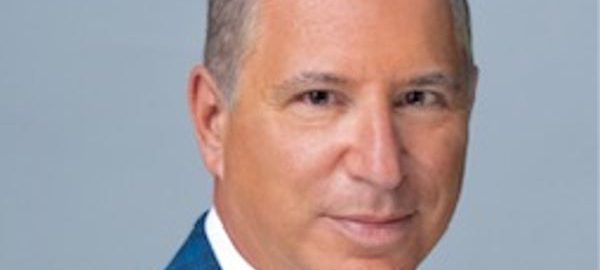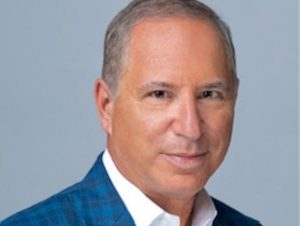
A LEAGUE OF HER OWN: HOW GOV. HOCHUL CAN BE MORE THAN “NOT CUOMO”

In the early days of Governor Hochul’s administration, the press has delighted in the stylistic differences between her and her predecessor. She answers questions in one sentence! No hokey powerpoints or creepy posters! She edited her storm jacket with a sharpie! The Governor’s substantive policy moves have also been presented mostly as a contrast to Cuomo’s actions: counting all the COVID deaths, moving on the eviction moratorium, cooperating with the Mayor of New York City.
Governor Hochul has the opportunity to be much more than “not Cuomo.” By adopting an agenda that is not merely reactionary to what Cuomo left undone or wrongly done, the new Governor can put a Hochul stamp on New York that is entirely her own. As another former Governor Cuomo (Mario) was fond of saying, the best politics is good government, and Hochul has the opportunity to achieve both. Here are some suggestions for the Hochul agenda.
- Climate Change Bond Act: Hochul can seize this post-Ida moment in which public attention is acutely focused on the devasting effects of climate change and the woeful unpreparedness of the state to deal with it, by putting a Climate Change Bond Act on the ballot in November. Using the little known Environmental Facilities Corporation (admit it, you’ve never heard of it), Hochul can leverage those funds to begin a Marshall Plan sized project for a variety of water related infrastructure projects: hardening 100 year old subways from inundation, dealing with the pesky problem of sewer backups in the Rockaways (it’s not all turkey grease at Thanksgiving backing up those drains), strengthening upstate dams (there are 407 high hazard dams), and surgically improving drainage in areas vulnerable to climate change throughout the state. While there is already an environmental bond act on the ballot in November, it is underfunded and lacks focus, covering projects from farm preservation to pollution control to open space preservation to historic site improvements. The “something for everyone” approach is beloved by the legislature in an election year but the climate crisis needs laser focus and an investment in the range of $10 billion to do it right. Hochul should convene a panel of climate, engineering and resilience experts to pick the projects in advance in a process untainted by the politics of local pork. Hochul will be ahead of any other Governor in the nation by actually taking concrete, large scale steps to protect her people from climate change.
- CUNY INVEST: The most underutilized asset in the state is the City University of New York. Every Governor has ignored it. Hochul should do for CUNY what Rockefeller did for SUNY and upstate: invest deeply and make the system the gateway to opportunity for the diverse generation of young people in whose hands the future of New York City lay. A first class urban public higher education system is not an oxymoron. There are ready to go initiatives such as Hunter President Jennifer Raab’s visionary but long dormant plan for a leading center for nursing studies. New York is desperate for nurses, young people are hungry for good jobs: CUNY is the perfect institution to bring them together. And the politics for Hochul – who needs deliverables in the City for her primary campaign- of becoming the champion of CUNY are self-evident.
- Critical Cyber-Infrastructure Protection Program: When I was Director of State Operations and Senior Policy Advisor to the Governor, we were advised by the Federal Government that our critical infrastructure – power plants, dams, bridges, transit, hospitals- were under constant cyber-surveillance and attack by foreign actors. The threat has only increased, yet the state has had little capacity to protect these assets. It deserves gubernatorial priority. While much of this work is behind the scenes -no vanity projects like bridge light shows here- the value to protecting the institutions that make up the physical fabric of New York is immeasurable.
- Move Electric NY: The Metropolitan Transportation Authority announced their big plan to go to electric buses in May. They are adding fifteen electric buses and will have sixty in the fleet by the end of 2022. Woo-hoo. The City of Shenzhen, China, had a fleet of 100% electric buses in 2017 – over 16,000 of them. New York needs years to do sixty out of a fleet of six thousand? We can do better. While you are at it, Governor Hochul, throw in an all-electric fleet of taxis and Ubers. The London Taxi Company (now London EV), maker of the iconic London cab, has launched 5000 electric taxis. Bring them to New York or better yet build them here. New York’s air will be cleaner, it’s resident’s healthier, and it will create a whole new job base.
- New York-NOLA Storm Team: I evacuated my adopted home of New Orleans in advance of Category 4 Hurricane Ida and arrived in New York to witness the same storm’s destructive impact thirteen hundred miles away. One person died during the storm in New Orleans; as of this writing they are still counting the bodies in the Northeast. Though New York and New Orleans both cities surrounded by water, their geographies are vastly different: no one died in a basement in New Orleans because there are no basements. Yet both cities have much to learn from each other. New Orleans, built significantly below sea level (and sinking at an alarming rate), has long experience dealing with drainage issues and storm surge. Every drop of water that comes down has to be pumped out by a system that dates back to about the time of the first subway construction in New York. And though New Orleans recovery from Ida has been slow and difficult (including a series of tragic post storm nursing home deaths in the tropical head), the levees held and the improbably located city avoided a Katrina-level disaster. Governor Hochul and Governor John Bel Edwards, along with putative New York City Mayor Eric Adams and New Orleans Mayor Latoya Cantrell would benefit their residents by collaborating on the lessons each have learned –from mistakes as well as successes- and developing specific steps for storm protection based on that experience. (Though as I wrote previously in these pages, Robert Moses almost destroyed the historic center of New Orleans with his plan for a mammoth interstate. After New York apologizes for that, there’s no doubt that the always sanguine New Orleanians will be happy to participate.) Governor Hochul needs a good reason to venture outside the boundaries of New York. This is one.
- Earthquake Readiness: Don’t laugh. One is coming for New York. We tend to prepare for the last disaster like generals plan to fight the last war. New York experienced magnitude 5 earthquakes in 1737, 1783, and 1884, before subways or skyscrapers. A 2008 study by Columbia University seismologists suggested that a magnitude 6 or 7 earthquake could emanate from the Ramapo fault line, causing untold damage and loss of lives. In August, 2011, a magnitude 5.8 earthquake in rural Virginia caused buildings to sway in New York City, forcing the evacuation of City Hall and other Manhattan buildings, grounding flights at JFK airport, and overwhelming cell phone networks. Buildings were evacuated and workers spilled into the street near the state capitol in Albany, New York, five hundred miles away from the epicenter. f there was one thing that kept me up at night when I was coordinating disaster response for the Governor’s office, it was the prospect of an earthquake for which we were ill prepared. Though it won’t make headlines for her, a serious effort to assess and plan for a seismic event would be a lasting contribution of the Hochul agenda.
A friend of mine who was an aspiring urban planner for the City of New Orleans in the 1960’s told me this story: He was sent to New York City to learn from the administration of Mayor John Lindsay what the City was doing in the field of city management. He had never been out of New Orleans and was astonished by the size and complexity of New York City. While meeting with a deputy mayor at City Hall, Mayor Linsday walked in and introduced himself. “Let me know if there is anything I can tell you,” Linsday offered. My friend, his experience walking through the teeming streets of Manhattan fresh in his mind, blurted out, “How do you manage a place like New York?!” Lindsay looked him in the eye and said, “No one can manage New York. The secret is to create the illusion you are managing New York. If you can’t do that, all you have is chaos.”
Andrew Cuomo’s gift was that he was a master of the illusion of managing New York. (He received an Emmy for it, at least temporarily). Governor Hochul is assembling the strongest management team in recent state history with picks like Kathryn Garcia for Director of State Operations, who brings more experience to the job than any of her predecessors (including me). With that team, and her own no-nonsense Western New York ethic, Governor Hochul has the opportunity to do away with the illusion and the misdirection and actually manage New York in her own right, leaving the state and its people considerably better off than she found it.
Howard Glaser served as Director of State Operations and Senior Policy Advisor to the Governor from 2011-2014, and Special Assistant to the Governor from 1984-1991. He was Theodore Kheel Fellow for Transportation Policy, and Grove Fellow Leader at the Roosevelt House Public Policy Institute at Hunter College from 2017-2019, and Adjunct Professor at the Executive Masters of Public Administration Program at the School of International and Public Affairs at Columbia University from 2012 to 2015.
